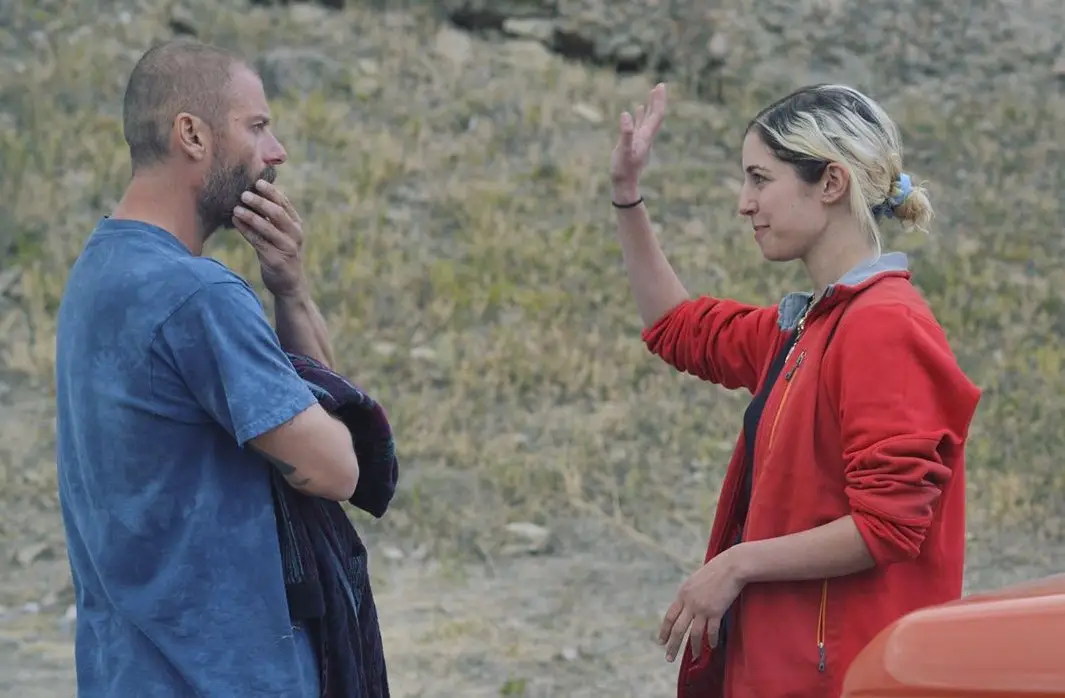“Mickey and the Bear” is the first feature film by director Annabelle Attanasio, and it portrays the nuances of life with post traumatic stress disorder (PTSD) without the false glamorization presented by many blockbusters today. The film has multiple accolades, including a 100 percent rating on Rotten Tomatoes and the Mark Urman Award for Fiction Filmmaking at New Jersey’s local Montclair Film Festival.
Montana may not be the most coveted filming location, despite its bucolic scenery, but with one of the highest per capita veteran populations in the United States, Attanasio’s choice to film there is unquestionably apt. Welcome to the town of Anaconda, home of Iraq war veteran Hank Peck (James Badge Dale) and his part-time daughter, full-time caretaker Mickey Peck (Camila Morrone).
Unemployed and struggling with PTSD, an oxycodone addiction and alcoholism, Hank is in no position to provide for anyone — including himself. The role of homemaker and caretaker fall on 18-year-old Mickey, whose mother died of cancer years before the film’s events take place.
“Mickey and the Bear” opens with Mickey performing the weekly task of picking up her father from an overnight stay in prison, which is only the beginning of her duties. Throughout the film, the audience sees Mickey working part-time at a taxidermy shop, picking up Hank’s prescriptions, buying dinner, bathing him when he is too incapacitated to do so and holding him through his nightmares.
Speaking to an audience at the Montclair Film Festival, Attanasio revealed that she herself grew up in a dysfunctional home, so her acute insight of mental illness comes from first-hand experience.
https://www.instagram.com/p/BstcO_yBmG5/
Hollywood movies and television hits are likely well-intentioned in their depictions of PTSD and addiction, but where they go wrong is their compelling need to please the audience, shock them and clue them in on the inner psyche of a so-called “damaged” character. Their Achilles heel is their futile attempt to answer the illusive question: “Why are they like this?” Often, the audience is thrown into a veteran’s most horrid war memories via violent flashbacks or emotional monologues in an attempt to answer this curiosity.
The aspect of the disorder that “Mickey and the Bear” masterfully includes is that, with PTSD and addiction, there is not a singular reason why people respond in any particular way. Also, the film holds that the audience’s curiosity doesn’t need to be satisfied for the disorder to be validated.
Attanasio uses both Hank an unnamed minor character, uncle of Mickey’s friend Wyatt Hughes (Calvin Demba), to emphasize this point as well as to demonstrate different ways PTSD symptoms are present in those whom it plagues.
In moments of lucidity, Hank displays the soft charm and wit that wooed his late wife. The audience genuinely comes to like Hank and understands why Mickey continues to support him in lieu of building her own life. During these gentler moments, Hank prepares meals, takes Mickey to a birthday dinner, boasts with pride about the money saved for Mickey’s college and even promises that one day they will swap their leaky trailer for a beautiful ranch. But the happiness is short-lived, as the camera pans from these hopeful moments to an unconscious Hank on the shower floor, with Mickey desperately searching for a pulse.
Although PTSD and addiction are the focus of the plot, they are never explicitly mentioned. Even when Mickey questions Veterans’ Affairs doctor Leslee Watkins (Rebecca Henderson) about whether Hank will get better, her response is simply “no.” This may seem like a cruel and hopeless answer, but it reflects reality — if Hank makes no attempt to get better, he won’t see any results.
PTSD can be medicated and worked through with therapy, but with his addiction, he must first acknowledge it in order to start the recovery process. Seeing as he continually begs Mickey to forgo her life and stay with him, it is clear that Hank sees his present state as his future.
In “Mickey and the Bear,” Hank’s PTSD is accompanied by addiction, which is unfortunately common. He suffers from nightmares and periods of delusion, during which he mistakes Mickey for his late wife. He blacks out in the shower and grows violent when Mickey responsibly raises questions regarding their lack of finances. But Mickey never asks Hank about the war — she never questions what occurs in his nightmares and never asks him why.
No singular event caused Hank’s PTSD, so a sole flashback or conversation could never describe what ails him. Think of any veterans you know — how many have talked about their war? How many choose to relive it by telling you about it? Major films have created the idea that such conversations are commonplace and that veterans themselves know the answer to the great and daunting “why” question. But this is evidently not the case.
The reality is about profit. Bombs, explosions, blood and gore sell well. Explicit violence in movies intrigues audiences and makes them feel like they can relate to a veteran’s suffering. But mental illness and addiction simply do not work that way. Sometimes, attempting to pin down a “why” can enable a user, giving them an excuse for their addiction rather than a motivation to recover.
Wyatt’s uncle represents another side of PTSD. The audience doesn’t get much information on this man but can easily tell that his illness is different from Hank’s. PTSD still consumes him, just not through oxy-induced manic depressive states. Instead, the character is affected through deep internal seclusion.
He sits silently and is unmoving at the dinner table, with no explanation offered besides a line delivered by his wife with a soft smile: “He is having a bad day.” Mickey instantly understands and asks “Which war?” Her dad is a former Marine of Iraq, and this man is a former soldier of Vietnam — the suffering is recognizable to those who live in its shadow.
Attanasio uses “Mickey and the Bear” to portray the true violence of PTSD and addiction, and it is not accompanied by a loud boom and shrapnel. She understands that the terror lies in their implications of everyday life, for basic human functioning and for what will surely become a deteriorating family unit.
When Dr. Watkins tells Mickey the burdens she bears are “too much for a child,” the audience might nod in agreement, but Mickey’s body language reveals a sarcastic response that one could imagine being vocalized as: “And? So what?” For Mickey, this is her life and her responsibility. Dr. Watkins’ comment reveals the naivety of those living comfortably beyond such circumstances — those who are able to pass judgment without fear of consequence.
Dr. Watkins encourages Mickey to cleave herself from Hank and to live free from her own addiction — caretaking. Asking Mickey to lay down her burden is like asking Atlas to lay down the sky. Whom will be crushed as a result?
Mickey herself raises the question: If she leaves and abandons her role, what about Hank? For many audience members, this question is far more pressing and relatable than Hollywood’s “why.” The fear of failing consumes the caretaker and is far more imperative a feeling than the fleeting curiosity about the “why.”
For a 21-year-old actress, Morrone exhibits a masterful aptitude for character portrayal. Mickey is a far more complicated character than any of Morrone’s previous roles, yet the Argentinian actress flawlessly captures the raw emotions that her character struggles to control.
From expressions of fatigue, to minute facial movements, to subtle body language, Morrone so convincingly characterizes Mickey that one might be tempted to wonder what life experiences she is drawing from. Through her acting, Morrone melts away completely, and the audience forgets about her, leaving only Mickey.
















